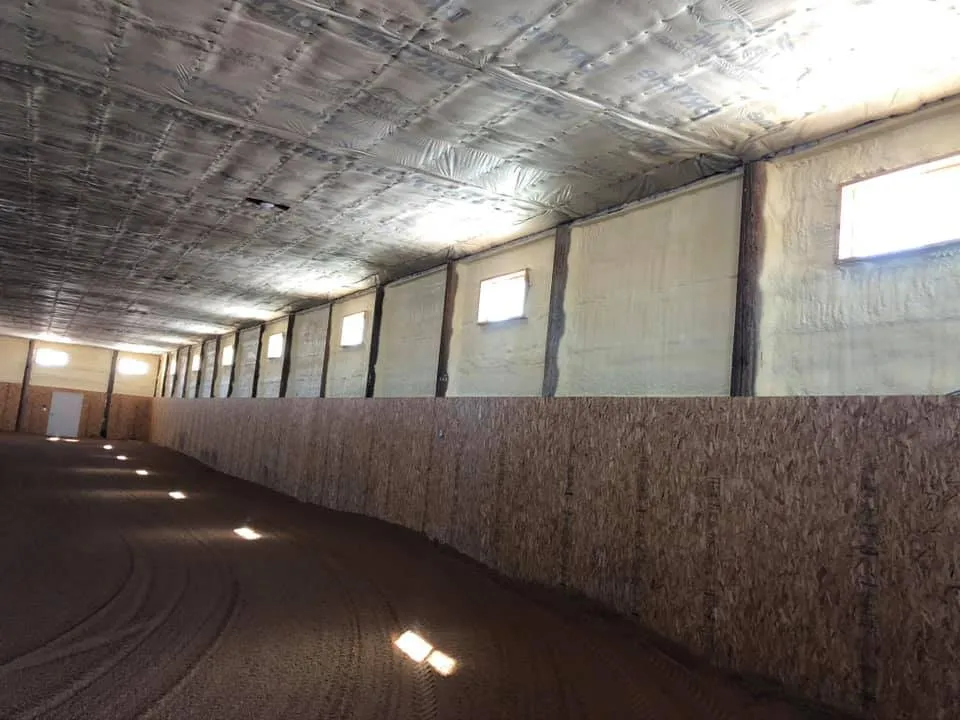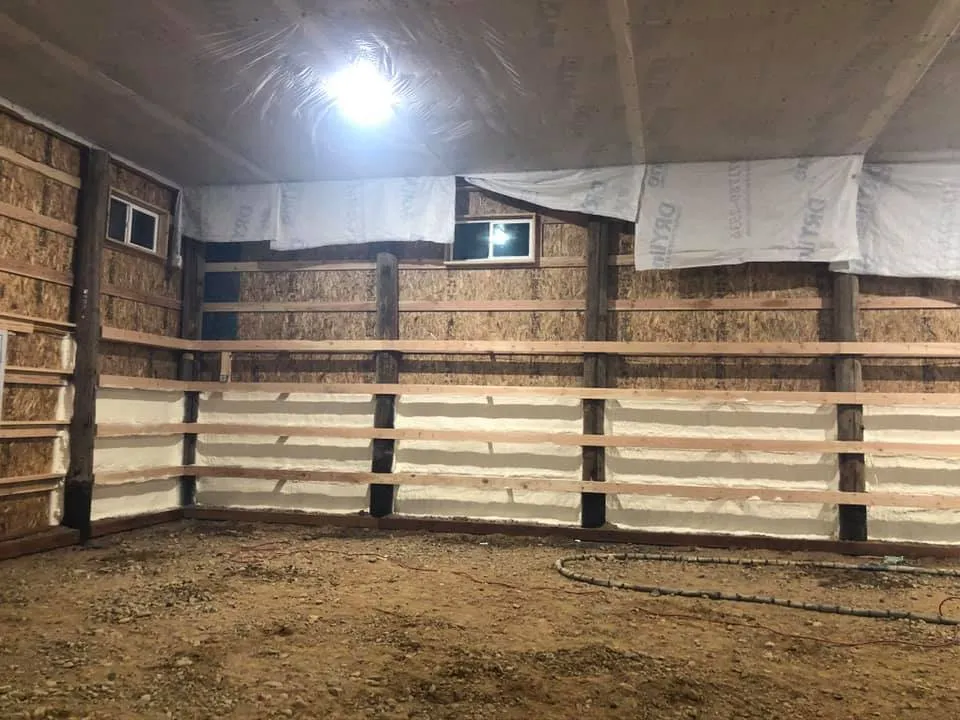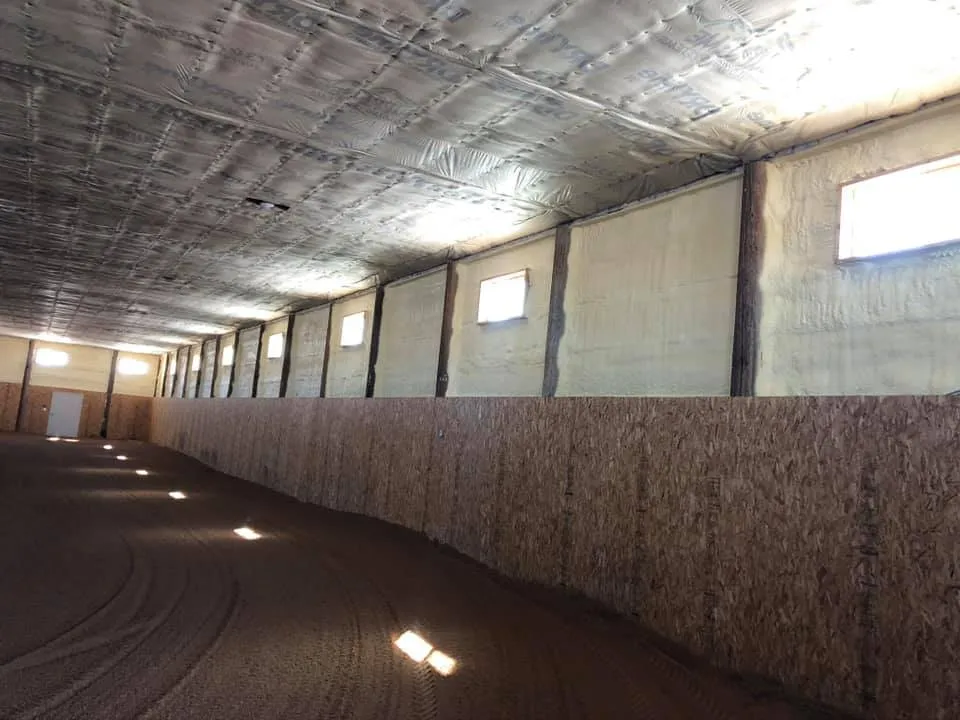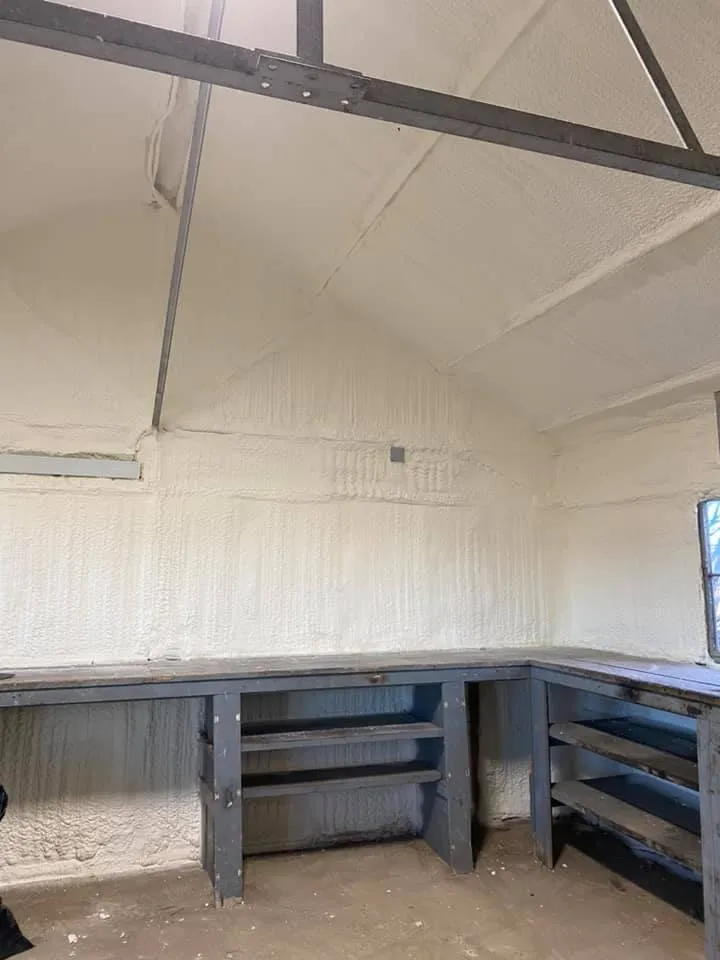

Spray foam insulation helps animal shelters maintain a healthier environment by controlling temperature, reducing moisture buildup, and minimizing airborne contaminants. Stable indoor conditions limit stress on animals, decrease the spread of illness, and create a more comfortable space for staff and volunteers. By sealing gaps and cracks, spray foam prevents drafts and keeps dust, pollen, and pests from entering.
Proper insulation directly impacts air quality in shelters. Reduced humidity limits mold growth, which can cause respiratory problems in both animals and people. Spray foam also reduces noise transmission between rooms, which helps lower stress-related behaviors in animals sensitive to loud environments.
Spray foam expands into gaps, creating a continuous air and moisture barrier. In animal shelters, this is especially important where kennels, exam rooms, and storage areas have varied temperature and humidity needs. In cold climates, it prevents heat loss; in warmer areas, it limits the workload on cooling systems.
| Feature | Open Cell Spray Foam | Closed Cell Spray Foam |
|---|---|---|
| Density | Lower, softer structure | Higher, rigid structure |
| Sound Absorption | Strong | Moderate |
| Moisture Resistance | Moderate | High |
| Thermal R-Value per Inch | ~3.5 | ~6.0 |
| Best Uses in Shelters | Interior walls for sound control | Exterior walls, floors, and areas with high moisture risk |
Bonus Tip: For shelters in humid climates, closed cell spray foam on exterior walls combined with open cell in interior partitions can balance moisture protection and sound control.
| Specification | Open Cell Spray Foam | Closed Cell Spray Foam |
|---|---|---|
| R-Value (per inch) | 3.4 – 3.8 | 5.6 – 7.0 |
| Air Permeance | ≤ 0.02 L/s·m² | ≤ 0.02 L/s·m² |
| Water Absorption | 5–10% by volume | <2% by volume |
| Compressive Strength | ~0.5 psi | 25–60 psi |
| Lifespan | 20+ years | 20+ years |
Source: Spray Polyurethane Foam Alliance (SPFA)

Installation can be completed within days, but temporary relocation of animals from treated areas is recommended to avoid chemical exposure during curing.
Once fully cured and ventilated, spray foam is inert and safe for occupancy.
In many cases yes, but the existing material must be dry, mold-free, and structurally sound.
By sealing air leaks and reducing moisture, spray foam limits odor spread but should be paired with proper ventilation.
Spray foam insulation stabilizes temperature, improves air quality, reduces noise, and supports healthier conditions in animal shelters. Selecting between open cell and closed cell options depends on moisture risk, sound control needs, and climate conditions. Regular inspections ensure long-term performance.
For expert guidance on insulation solutions that improve shelter environments, contact High Country Solutions at [email protected] or call (307) 248-9063.
Annually, to check for mechanical damage or water intrusion.
Yes, damaged sections can be cut out and re-sprayed without replacing entire walls.
Yes, airtight sealing means mechanical ventilation must be balanced for healthy airflow.
Closed cell foam resists wind-driven rain and maintains insulation value even in sub-zero temperatures.


